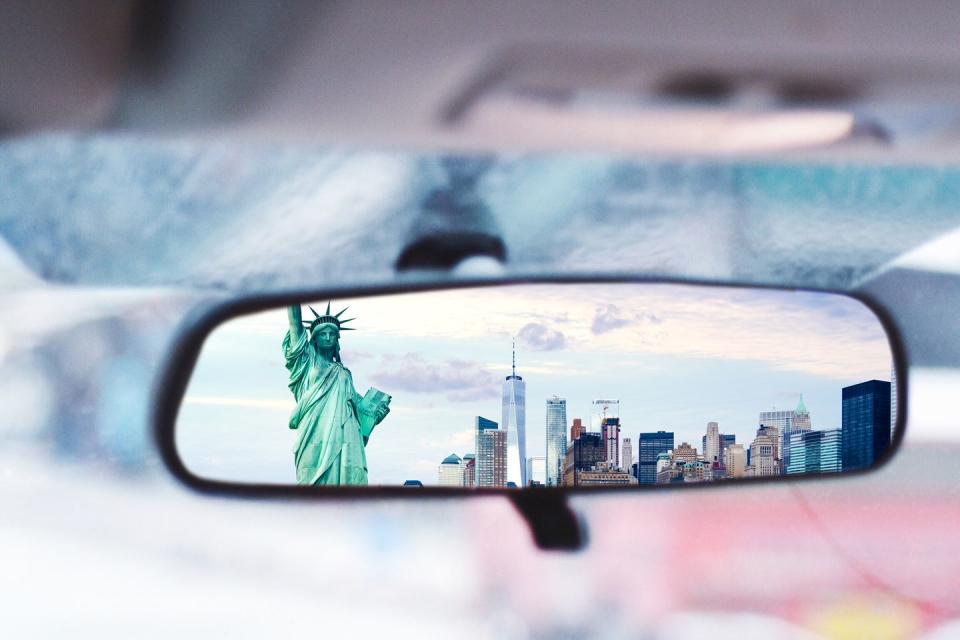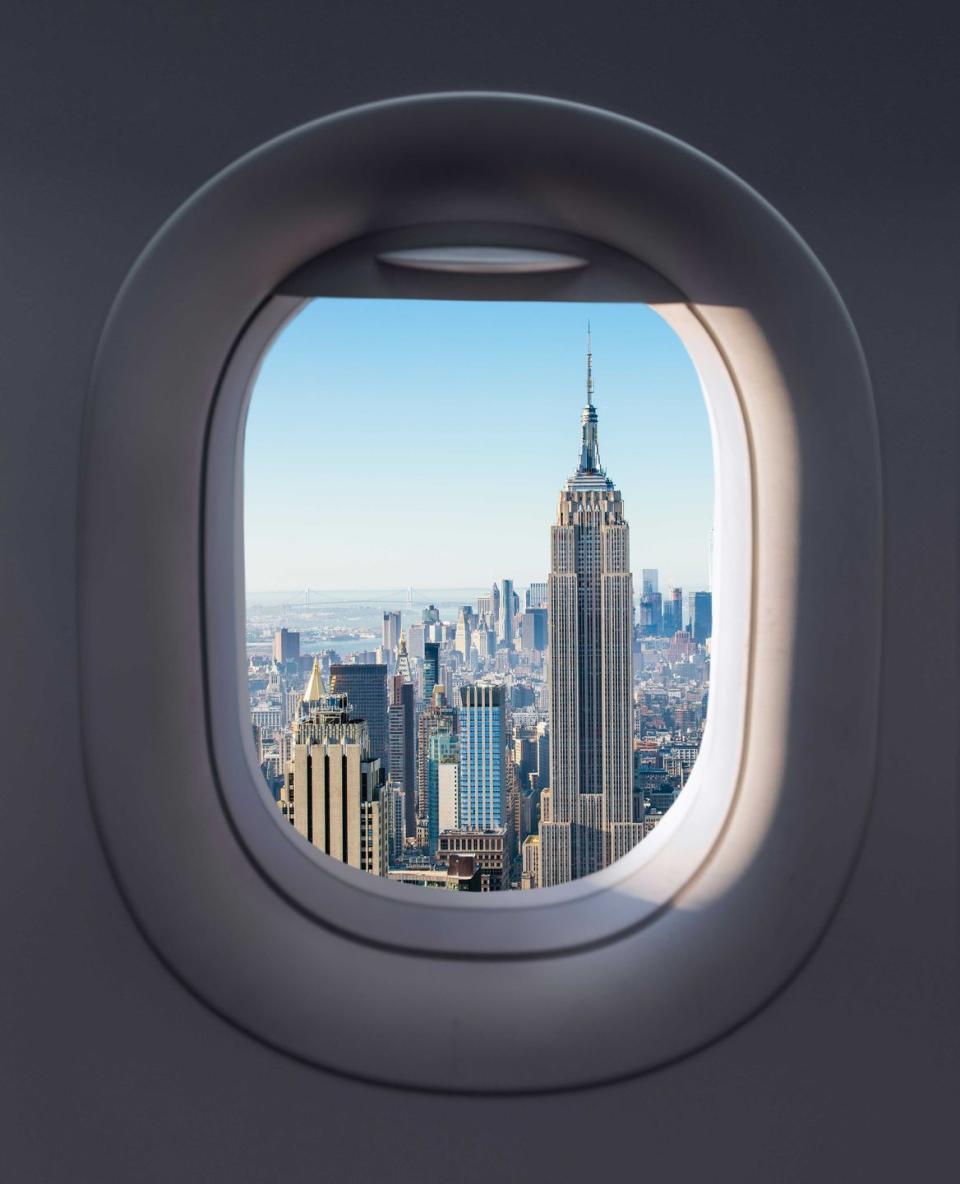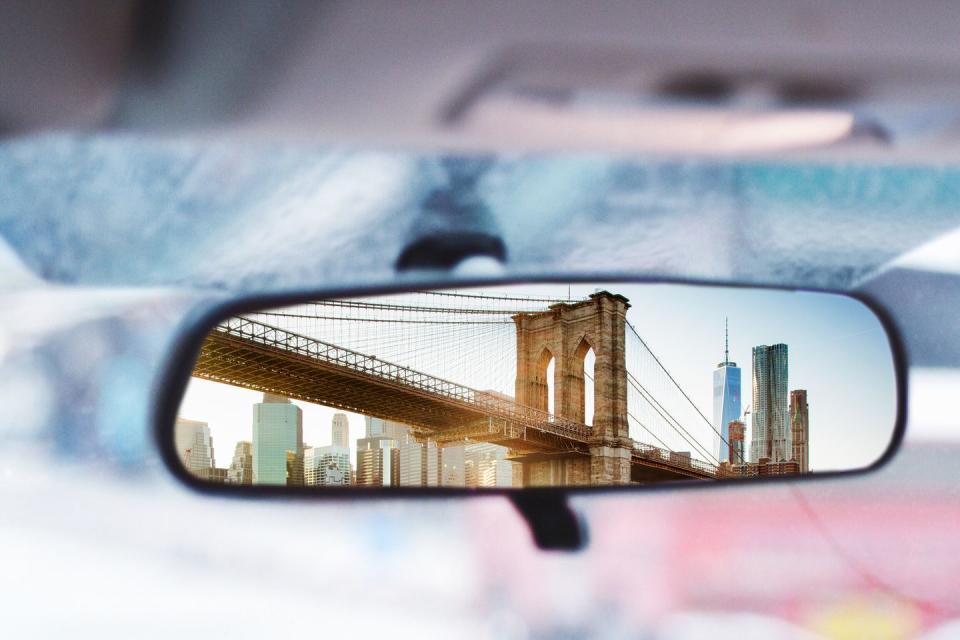What It Means to Be a New Yorker in Exile

According to E.B. White, there are three kinds of New Yorker. In his 1949 essay “Here Is New York,” White identified the general categories of people who call New York City home. The first: New York natives, those born in the city. The second: commuters, a group he regarded with scorn and pity in equal measure. Finally, he described his favorite category: settlers, or people who have dispatched themselves to New York from all over the world, starry-eyed, sometimes delusional, and hell-bent on self-reinvention.
I would argue that he ignored another undeniable category: expatriate New Yorkers, who may live thousands of miles away from the city but who still can’t be mistaken—nor would they want to be—as coming from anywhere else.

I happen to be a freakish combination of all four categories. I was conjured up in the mid-1970s by two entrenched New Yorkers, a journalist father (native, fourth generation) and a pianist mother (settler, b. Minnesota). I was born at Mount Sinai Hospital on the Upper East Side, after nearly making my worldly debut in the middle of the Russian Tea Room. After having been escorted to the suburbs for my upbringing (making me a reluctant commuter), I eventually scrambled back to the city as quickly as possible (settler).
For the past few years I’ve been happily living in Los Angeles. When I first moved to California, one of my New York–based literary agents was appalled by my betrayal. People had to be alerted that I was still a New Yorker, she told me. My author bio was updated to read, “She is a New Yorker currently based in Los Angeles.”
I was both proud of this line and embarrassed by it, but it was true then and remains true now. No matter where I’ve lived I have always been a New Yorker at large. For many of us who have spent our formative years in and around New York, the city makes us in its image, and it long retains its ability to pull us back with “umbilical whiplash,” to quote Edina Monsoon of Absolutely Fabulous.
Even after years in Los Angeles, I still wear mostly black; I speak rapidly and am in a relentless battle to curb my own impatience; I talk with strangers and I like grit; my elbows are out. I’m aware that many people in my adopted city think I’m just an asshole, but I’m shameless enough to blame some of these characteristics on my hometown’s influence. I can often spot another expat New Yorker a mile away. The markers are less sartorial than attitudinal, something in the carriage.
Many of the other New Yorkers–afield whom I have consulted on this subject report having similar indelible character traits, and a deep reluctance to surrender “New Yorker” as their primary identifier. Filmmaker James L. Brooks (native, b. Brooklyn, and settler, raised in New Jersey) says, “For 20 years, when someone asked, ‘Where are you from?’ I would say, ‘I live in Los Angeles, but I’m from New York.’ And now when I say, ‘I’m from L.A.,’ I still feel like a traitor.”

Actress Debi Mazar (native, b. Queens) was for years cast in archetypal tough-talking New Yorker roles in such movies as Goodfellas and Bullets over Broadway. She now lives in Italy with her husband, chef Gabriele Corcos, but says she will always be a New Yorker first and foremost.
“New York is my DNA,” she says. “I feel like one of the queens of the city. I know every corner. New York’s in my soul, and, unfortunately, it’s always how I’m going to sound.”
Biographer William Middleton (settler, b. Kansas) currently lives in Paris, but he first moved to New York in 1985 to study journalism. Even when Middleton is separated from the city, “it’s always the center of my world,” he says. “I’ve always loved that quote from [Mayor] Ed Koch: ‘You have to live here for six months, and if at the end of the six months you find you walk faster, talk faster, think faster, you’re a New Yorker.’ To me that is what you learn in New York: to think faster and be sharper. It’s a finishing school.”
Many New Yorkers far from home watched in horror as the coronavirus pandemic tortured the city this past year. The 9/11 attacks on the World Trade Center had taught many of us that New York comes together in moments of catastrophe, but one of the cruelties of the pandemic was the mandatory isolation. The last thing New York needed was an influx of would-be do-gooders; we were just more potential cases for already overrun ICUs. I was, of course, soon in lockdown in Los Angeles, too, but spared the scream of nightly sirens that I knew my friends and family were enduring back in New York.

There were ways to be there without being there: the daily Cuomo pressers, the barrage of New York Times alerts, dawn FaceTime debriefings with friends and family who hadn’t fled the city. My family and I placed orders with our favorite New York stores: McNulty’s Tea & Coffee Co., Levain Bakery, Three Lives & Company, Tea & Sympathy. The arrival of each package brought joy, homesickness, and anxiety all at once.
To calm myself at night, I watched short videos of New York that I’d taken over the past few years. They were just snippets of normal-times city life, but they became essential lullabies during those awful weeks: 37 seconds of the main concourse at Grand Central at rush hour; nine seconds of summertime Bryant Park at high noon, with hundreds of people basking in the sun. There was video taken through the windows of various taxis: driving down Fifth Avenue at midnight; lurching along Bleecker Street, mid-blizzard; racing up the West Side Highway at sunset. (I even have video of the Lincoln Tunnel, but you’d have to be damn homesick to draw any comfort from that one.)
Like most New Yorkers I regard the proclamation that the city is over with indignation and disgust. Such prophecies are likely as old as the city itself, and they never bear out. I’m old enough to have experienced three waves of New-York-is-overism: the bankruptcy- and crime-ridden 1970s, the 9/11 attacks, in 2001, and the economic crash of 2008, which sent countless fainthearted finance types scurrying back to London, Stockholm, or Singapore, bellowing in chorus that the city was doomed. They were not missed.
The recent exodus from the city has been widely publicized, but those who remained are reporting strong signs of life. The Metropolitan Museum of Art and MoMA have reopened; quartets play on stoops and street corners; restaurants have lined the streets, with often magical results.
“We wondered, Is this Soho, or a particularly lively stretch of the Via Veneto?,” says architect and filmmaker James Sanders (native, b. Mount Sinai), who watched out the window of his Tribeca loft as La Mercerie set up a block of white-clothed tables. “In fact, it was just one of the thousands of similar setups being installed overnight around the five boroughs—which have demonstrated that the city’s power of positive transformation remains undimmed.”
In “Here Is New York,” White dismissed the downfall prophecy phenomenon with a shrug. Of course, New York’s fortunes wax and wane, he observed, but the city always endures. “In flush times the population mushrooms and the new dwellings sprout from the rock,” he wrote. “Come bad times and the population scatters and the lofts are abandoned and the landlord withers and dies.” One of New York’s characterizing features, he goes on, is change: New York “never quite catches up with itself, is never in equilibrium.”
That said, he added, the city was—and remains—somehow changeless, too. Even though those of us who are far away dread what we’ll find when we can come back home, we know there will still be a certain familiarity, that bedrock of New York character. This doesn’t mean we’re not praying that our sacred places don’t go under in the meantime. Mine include the Saloon Room at the Grand Central Oyster Bar and Bemelmans; the wood-paneled research rooms at the New York Public Library; and the red clay tennis courts in Riverside Park.
For interior designer Georgia Tapert Howe (native), who moved to Los Angeles nearly 10 years ago (“I don’t know that I’ll ever feel entirely like an Angeleno. The first things I read in the morning are the New York Times and the New York Post”), bookshops and restaurants are worryingly endangered species right now. “One of my favorite restaurants has closed, Lucky Strike,” she says. “At least I still have the Odeon.”
If you’re lucky, your sacred New York haunts mostly fall into the changeless category of landmarks. For Brooks, Central Park is always inspiring. “Every time you walk across it, you’re going to see something great,” he says. “You’re going to see people in love; you’re going to see a baby; you’re going to see a great dog.”
Mazar also loves the more eternal aspects of the city. “I get joy from walking in Red Hook and looking at the Statue of Liberty,” she says. “And walking down Sixth Avenue in Brooklyn and popping into churches. I love the Belt Parkway: the way it wraps around, and there you see the Verrazzano Bridge, looking like a string of pearls.”
That said, her most sacred place is the subway. “I have fun on the train. I’ll talk to anybody. It’s underground theater, and that’s what New York is: theater. There’s no city in the world like it.”
This story appears in the December/January 2021 issue of Town & Country.
You Might Also Like


